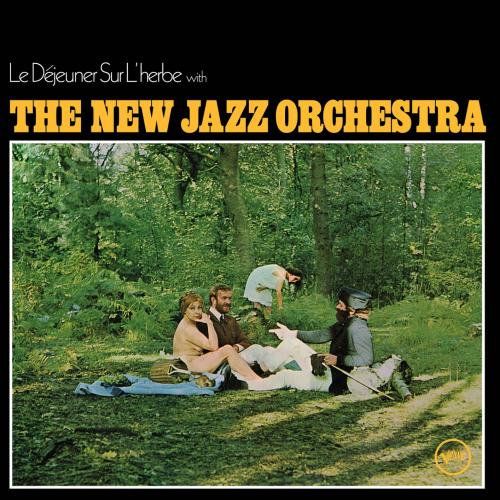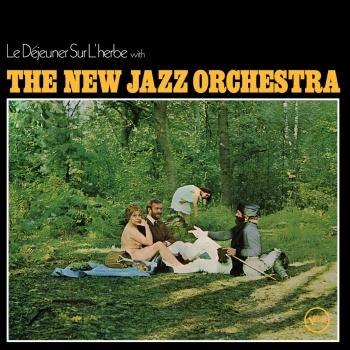
Le Déjeuner Sur L'Herbe (Remastered 2020) The New Jazz Orchestra
Album info
Album-Release:
1969
HRA-Release:
10.09.2021
Album including Album cover
I`m sorry!
Dear HIGHRESAUDIO Visitor,
due to territorial constraints and also different releases dates in each country you currently can`t purchase this album. We are updating our release dates twice a week. So, please feel free to check from time-to-time, if the album is available for your country.
We suggest, that you bookmark the album and use our Short List function.
Thank you for your understanding and patience.
Yours sincerely, HIGHRESAUDIO
- 1 Le Déjeuner Sur L'Herbe (Remastered 2020) 07:46
- 2 Naïma (Remastered 2020) 04:42
- 3 Angle (Remastered 2020) 05:03
- 4 Ballad (Remastered 2020) 05:21
- 5 Dusk Fire (Remastered 2020) 05:26
- 6 Nardis (Remastered 2020) 05:06
- 7 Study (Remastered 2020) 06:39
- 8 Rebirth (Remastered 2020) 04:46
Info for Le Déjeuner Sur L'Herbe (Remastered 2020)
If one were asked to pick an album that represented the best of British jazz in the 1960s, Le Déjeuner Sur l’Herbe by the New Jazz Orchestra would be a serious contender. Recorded in September 1968, it draws together many of the key streams that had developed in British jazz in the preceding years, and also presages much of what was to come. Notwithstanding the line-up, which includes some of the very best British jazz musicians directed by an inventive and ingenious leader in Neil Ardley, the session features pieces written by the most distinctive jazz composers active in Britain at that time alongside idiosyncratic interpretations of works by John Coltrane and Miles Davis. And it’s all captured beautifully by engineer Howard Barrow and producer Tony Reeves and it features a stella cast of some of the greatest musicians, not just from that era or genre but beyond; Jack Bruce, who would become one of the founding members of Cream, Barbara Thompson, Ian Carr, Michael Gibbs, Dave Gelly, Dick Heckstall-Smith and Jon Hiseman, who went on to form one of the greatest jazz / progressive / rock bands – Colosseum.
“A momentous album … a unified voice that pretty much sums up practically everything that a jazz orchestra requires.” (Jazz Journal)
“A masterly piece of work …” (Gramophone)
“… a really superb and inventive album” (Melody Maker)
Jack Bruce, bass
Jon Hiseman, drums
Dave Gelly, tenor saxophone, clarinet, bass clarinet
Jim Philip, tenor saxophone, flute, clarinet
Dick Heckstall-Smith, tenor saxophone, soprano saxophone
Barbara Thompson, tenor saxophone, soprano saxophone, flute
Derek Wadsworth, trombone
John Mumford, trombone
Michael Gibbs, trombone
Tony Russell, trombone
Derek Watkins, trumpet
Harry Beckett, trumpet
Henry Lowther, trumpet
Ian Carr, trumpet, flugelhorn
George Smith, tuba
Frank Ricotti, vibraphone, marimba
Digitally remastered
The New Jazz Orchestra
was founded in 1963 by Clive Burrows and resurrected and directed by Neil Ardley (b. 26 May 1937, Wallington, Surrey, England, d. 23 February 2004, Milford, Derbyshire, England) between 1964 and 1968. It provided the up-and-coming generation of British jazz musicians with the experience of working with a large jazz orchestra, its personnel including Harry Beckett, Henry Lowther and Ian Carr (trumpets), Paul Rutherford and Mike Gibbs (trombones), Don Rendell, Trevor Watts, Dick Heckstall-Smith and Barbara Thompson (saxophones), Michael Garrick (piano), Jack Bruce (bass) and Jon Hiseman (drums). It is not surprising that with such high-quality musicians The Times critic, Miles Kington, would write that the NJO ‘makes most big bands sound like trained elephants with two tricks’. It was not the only purpose of the NJO to provide such invaluable big band experience for these musicians; it also fostered a workshop atmosphere to provide its arrangers with a chance to try out scores.
Among those who wrote for the orchestra were Ardley, Alan Cohen, Gibbs, Rutherford, Garrick and Mike Taylor. ‘I learnt by my mistakes’, Ardley said later, and by the time he had become the leader he was producing major scores including the glorious ‘Shades Of Blue’ from the first album and ‘Dejeuner Sur L’Herbe’ from the second. All the material in the latter is derived from two/four-bar motifs in the main theme. There are no repeated chord sequences or scales; rather, the piece grows organically in the manner of classical music. This is not merely a third-stream piece but an attempt to write jazz in new way. It was the kind of experiment the NJO was formed to encourage and a score Ardley would have been lucky to have performed anywhere else. The NJO gave some concerts in London and at festivals. They also had a fruitful pairing with Colosseum. Despite what a contemporary described as its ‘fiercely swinging rhythm, first class solos and brilliant ensemble’, it gained no recognition abroad, though in time many of its members have become very well known on the continent.
This album contains no booklet.









